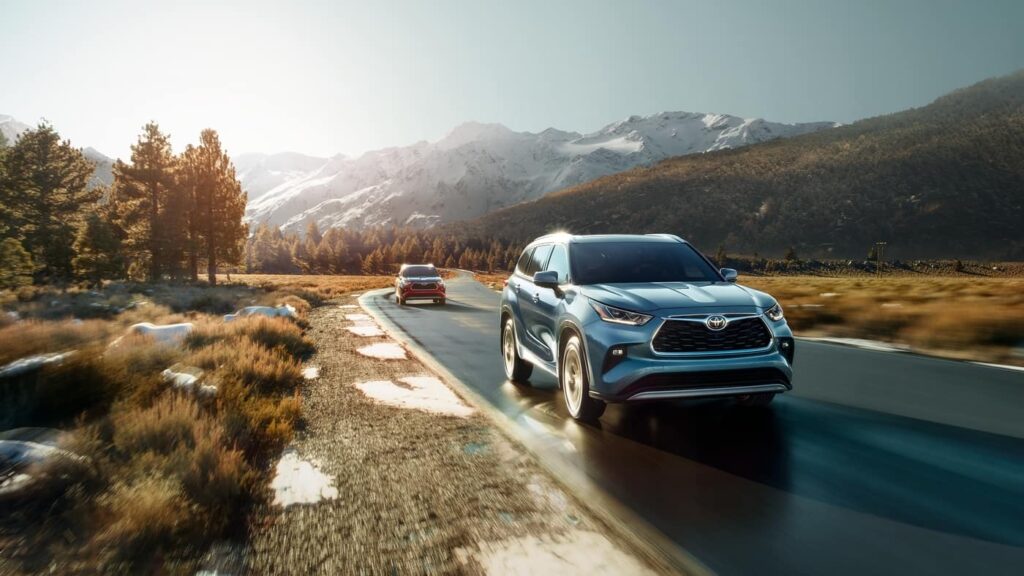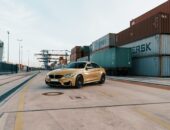Deciding what you need and how much to pay for it can be difficult when shopping for AWD and 4WD vehicles. There are literally many moving pieces.
Nothing’s more disappointing than realizing you overpaid for capability or you didn’t get the capability you wanted. That’s why we put together this shopping guide comparing the most popular drivetrains.
A Quick Rehash of All Wheel Drive vs Four Wheel Drive

Source: metrotoyota.com
4WD was once the only way to make it on snow and mud. It has the ability to lock the front and rear driveshafts together. This ensures that at least one wheel on each axle is receiving the torque it needs to prevent wheelslip, even if several tires have lost grip. In fact, it can keep it moving even if the terrain is uneven and there is a tire not meeting the ground.
Four-wheel drive has mechanical front, center and rear differentials that are sometimes offered in all-wheel drive vehicles, but are unlikely to be features. The extra strength of a 4WD model generally allows it to be better at towing than any rival drivetrains.
All-wheel drive was developed first and foremost for road use. It provides traction to the back wheels if it senses a need for grip. Some more sophisticated systems move the torque from side to side as needed. The increased interest in off-roading and outdoor adventures has led AWD engineers to create more sophisticated systems that can handle loose soil, mud, and sand better.
System independence allows it to be extremely flexible and meet conditions as they change. The automation of the system makes it easier for all drivers to use it without making mistakes.
They don’t have to turn capability on and off as they do in four-wheel drive.
AWD Shopping Considerations
At a minimum, every brand has its own AWD system, but it may have more than one. Honda, for instance, now has multiple varieties available. On small and midsize Honda SUVs, they have an excellent system that has been used for a long time and refined every year. The Honda CR-V AWD uses sensors and moves power to the back wheels when needed to maintain control. Learn more about Honda SUVs click here.
A second more sophisticated i-VMT4 system is used for bigger models. This Intelligent Variable Torque Management is able to move torque to the wheel axles and to the individual wheels. New for the 2024 model year, Honda has Trailsport editions which have mud and sand modes added to this system. Plus, these get a special suspension to allow for better off-road use.
Adding to the mix, all-wheel drive technology has moved over to electric vehicles where dual motors are used to create AWD capability. The motors transmit torque to front and rear wheels as needed, according to messages from the sensors.
Often the premium paid for AWD is lower than that paid for 4WD. This makes it generally more affordable for more consumers. Since the system is lighter, you can find it on more vehicles, even compact sedans. However, buyers should be fully aware of what the vehicle can and can’t do before they buy it.
Fuel economy is better with part-time all-wheel drive than it is with 4WD. That’s because AWD has fewer mechanical parts and adds less weight. It’s also because a part-time AWD vehicle reverts to front-wheel drive by decoupling from the rear drivetrain.
Generally AWD tow ratings are better than front-wheel and rear-wheel drive SUVs. However, the ratings will be lower than 4WD vehicles.
4WD Shopping Considerations
4WD often requires input from the driver. That adds the element of human error, and some drivers don’t want the responsibility. There are 4WD systems now that offer to do the decision making. The key to finding the right system often comes down to knowing what brands are offering and how much your preferred type of 4WD will cost you.
The premium paid for 4WD is often higher than AWD. You can use online tools and compare the prices of AWD and 4WD SUVs of the same size.
Off-roading is usually implied in 4WD advertising. However, buyers often get misled into thinking their SUV or truck is especially hardy. Even with four-wheel capability, you need protective skid plates and special equipment. The SUV trim level that is the designated off-roader often has an enhanced build for the purpose.
Four-wheel drive can cause difficulty on the road. A traditional 4WD system doesn’t turn off, and that meant the wheels gripped too much on curves and turns. To balance that, there are part-time four-wheel drive systems and systems with the capability to be placed in low-range or high-range settings. Most people spend much more time on the road, and they need their vehicle to be responsive.
The Future for All-Terrain and All-Weather Driving

Source: thedrive.com
As happens with all things technological, all-wheel drive has become more sophisticated and has started to encompass more off-roading features. Four-wheel drive has become more sophisticated with more electronic features.
The ability of electric motors to propel the wheels and create the conditions of all-wheel drive would indicate that eventually the capabilities of 4WD will end up on electric vehicles. The name of the system may change, but these new technologies should evolve to the point of being about to go off-road and tow big loads.
Off-roading does require more than the right drivetrain capability, of course. The vehicles will have to be strong enough to do the work required of 4WD vehicles today.
Conclusion
There’s no need to pay for the toughest system just for bragging rights. Your goal should be to get the capability you will actually use. If you need to tow big loads or want to off-road on difficult terrain, then you should select 4WD. Otherwise, all-wheel drive is probably enough.
To learn exactly what AWD or 4WD means to the vehicle you are thinking of purchasing, you really need to check out the car manual which should be available online. It will be more forthcoming about what each system can and cannot do. This cuts out the salesy language and sometimes misleading pictures and presents you with the cold, hard facts.




